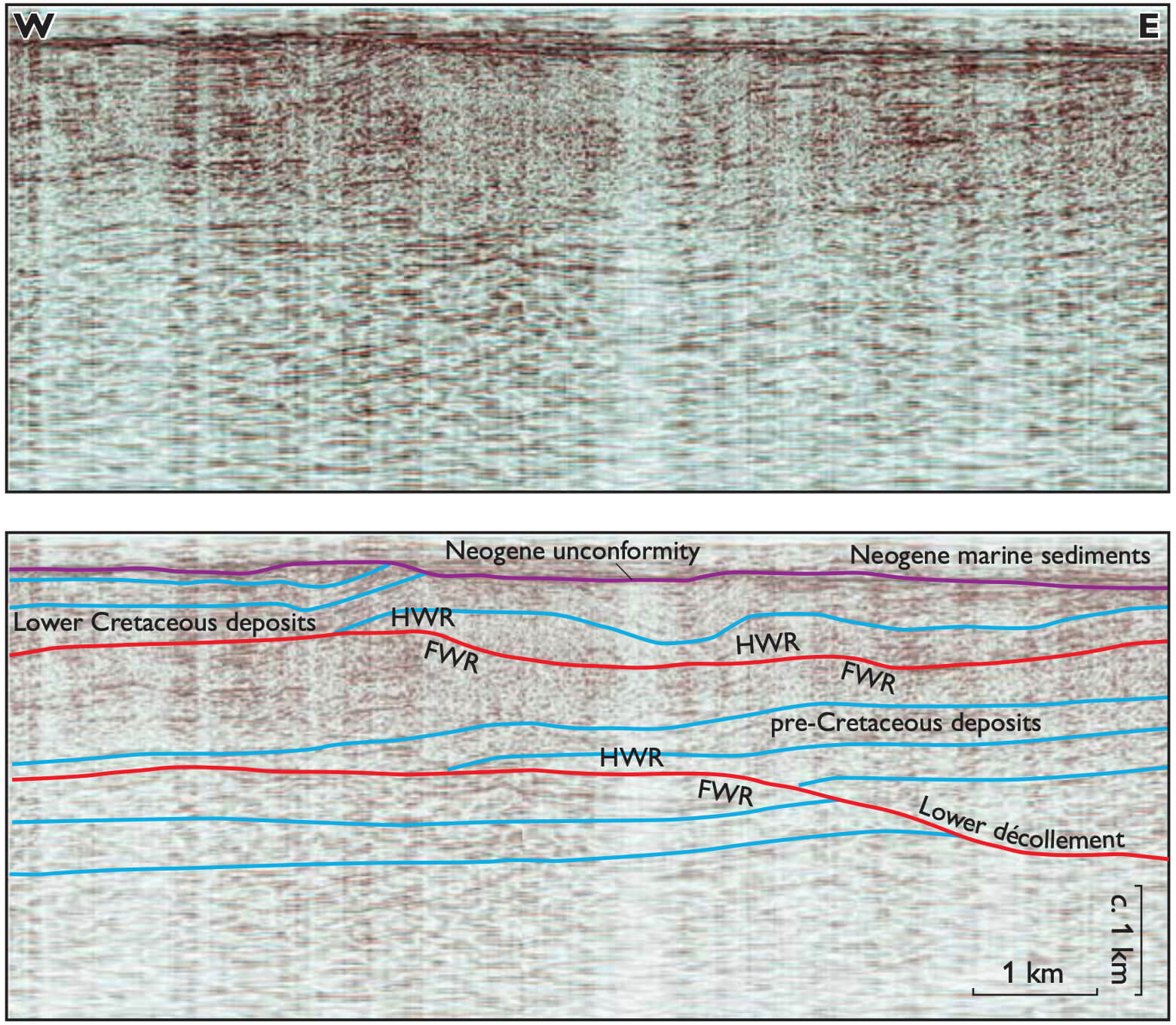
How to Cite
Share
Abstract
In the c. 40 000 km2 large Phu Quoc basin south-west of Vietnam reflection seismic data suggest a thin-skinned thrust-fault complex concealed by Neogene marine sediments (Fig. 1; Fyhn et al. 2010). The deformed sedimentary succession in the complex is of Early Cretaceous age, which is documented by biostratigraphical studies of outcrops and a 500 m deep well on the Phu Quoc island. A model for the thrust-fault deformation suggests that piggy-back basins were formed during displacement along the thrust faults. The translation was 3–8 km from east to west. The model is based on detailed structural analyses of 36 seismic sections that cover the Phu Quoc basin (Fig. 1). The main structural elements in the complex are flats and ramps with hanging-wall anticlines developed above the ramps. The crests of the hanging-wall anticlines occur as remnants of partially eroded structural highs. This paper describes the thin-skinned thrust-fault structures that form the basis for the interpretation of the concealed fold-belt complex in the Phu Quoc basin.
How to Cite
Share
Copyright (c) 2010 Stig A. Schack Pedersen, Lars Ole Boldreel, Emil Bach Madsen, Mette Bjerkvig Filtenborg, Lars Henrik Nielsen

This work is licensed under a Creative Commons Attribution 4.0 International License.
Downloads
Edited by Ole Bennike, Adam A. Garde and W. Stuart Watt
This Review of Survey activities presents a selection of 23 papers reflecting the wide spectrum of activities of the Geological Survey of Denmark and Greenland, from the microscopic to the plate-tectonic level. In addition, an obituary about the former director of the [...]









